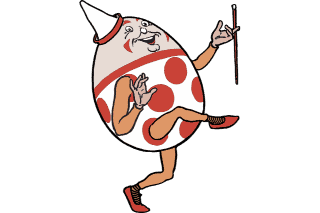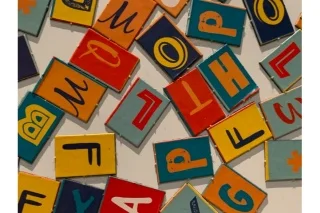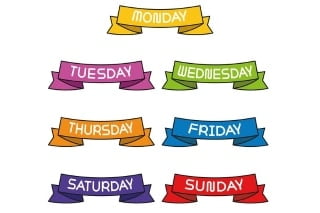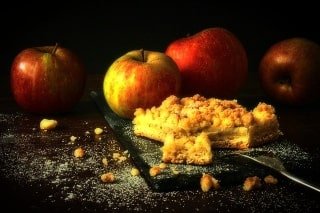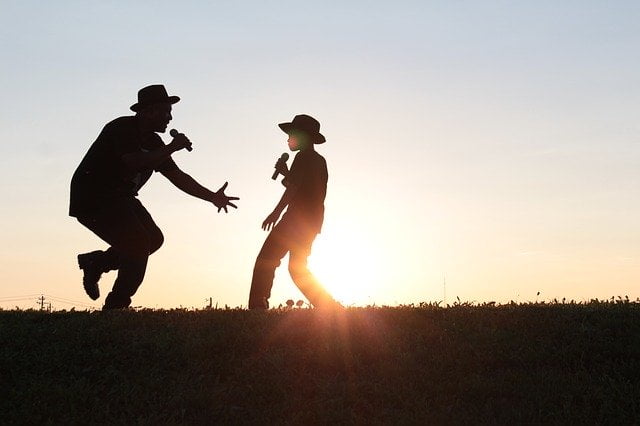
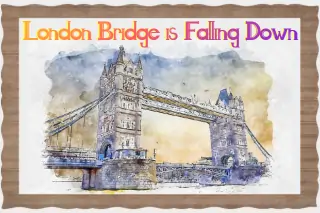
London Bridge is Falling Down Lyrics
“London Bridge Is Falling Down” is a beloved nursery rhyme that has been passed down for generations among children. Its precise author remains unknown, as it has undergone modifications and adaptations over time from various contributors. This timeless rhyme has been featured in numerous children’s books and song collections, captivating young readers with its catchy rhythm and playful lyrics.
The origins of “London Bridge Is Falling Down” can be traced back centuries, drawing inspiration from the historical struggles and reconstruction of the actual London Bridge. Originally constructed during Roman times, the bridge faced frequent damage caused by factors such as adverse weather conditions and increased traffic. The rhyme vividly portrays the challenges encountered during the bridge’s maintenance and the determined efforts to preserve its integrity.
This rhyme holds great significance as it effectively captures the attention and entertains young children while also conveying a sense of history and cultural heritage. Through its playful lyrics, children are introduced to the iconic London Bridge and its historical importance. Furthermore, the rhyme aids in the development of children’s language skills, rhythm, and coordination as they engage in singing and accompanying actions.
“London Bridge Is Falling Down” Lyrics
London Bridge is falling down,
Falling down, falling down,
London Bridge is falling down,
My fair Lady.
Build it up with wood and clay,
Wood and clay, wood and clay,
Build it up with wood and clay,
My fair Lady.
Wood and clay will wash away,
Wash away, wash away,
Wood and clay will wash away,
My fair Lady.
Build it up with bricks and mortar,
Bricks and mortar, bricks and mortar,
Build it up with bricks and mortar,
My fair Lady.
Bricks and mortar will not stay,
Will not stay, will not stay,
Bricks and mortar will not stay,
My fair Lady.
Build it up with iron and steel,
Iron and steel, iron and steel,
Build it up with iron and steel,
My fair Lady.
Iron and steel will bend and bow,
Bend and bow, bend and bow,
Iron and steel will bend and bow,
My fair Lady.
Build it up with silver and gold,
Silver and gold, silver and gold,
Build it up with silver and gold,
My fair Lady.
Silver and gold will be stolen away,
Stolen away, stolen away,
Silver and gold will be stolen away,
My fair Lady.
Set a man to watch all nigh,
Watch all night, watch all night,
Set a man to watch all night,
My fair Lady.
Suppose the man should fall asleep,
Fall asleep, fall asleep,
Suppose the man should fall asleep?
My fair Lady.
Give him a pipe to smoke all night,
Smoke all night, smoke all night,
Give him a pipe to smoke all night,
My fair Lady.
- london bridge falling down lyrics
- london bridge is down
- london bridge is falling down lyrics
- london bridge is falling down meaning
- london bridge lyrics
- london bridge is falling down poem
- london bridge rhymes
- london bridges falling down lyrics
- london bridge song
- london bridges lyrics
- london bridge is falling down with lyrics
- london bridges song
- american version of london bridge is falling down
- london bridge is falling down game
- london bridge is falling down lyrics history
The rhyme “London Bridge Is Falling Down” consists of several verses that collectively tell the story of the bridge’s deterioration and reconstruction. The opening verse, “London Bridge is falling down,” sets the scene and captures children’s attention with its rhythmic repetition. It creates a sense of anticipation and curiosity about why the bridge is falling down.
The subsequent verse, “Build it up with wood and clay,” introduces the idea of rebuilding the bridge using basic materials like wood and clay. Children can imagine the construction process and learn about different building materials. They begin to understand the importance of using sturdy materials and the concept of problem-solving in construction projects.
The following verse, “Build it up with iron and steel,” reflects technological advancements by suggesting the use of stronger materials to fortify the bridge. Children learn that materials like iron and steel offer greater durability and stability, which are essential for long-lasting structures. This verse encourages discussions about engineering and the importance of selecting appropriate materials for different types of construction.
The final verse, “Build it up with silver and gold,” takes a whimsical turn by suggesting the use of precious materials to rebuild the bridge. This verse sparks children’s imaginations as they envision a grand and opulent structure. It introduces the concept of embellishing structures with luxurious materials and allows children to explore the idea of grandeur and the symbolism associated with precious metals.
Throughout the rhyme, the repetition of these verses aids in memory retention and reinforces the key elements of the narrative. Children actively engage in the storytelling process, incorporating movement and gestures to accompany the verses. By participating in the rhyme, children not only enjoy its rhythmic and playful nature but also gain exposure to concepts such as construction, materials, problem-solving, and even historical references to the famous London Bridge.
Overall, “London Bridge Is Falling Down” is a timeless rhyme that combines entertainment and education. It sparks children’s curiosity, encourages imagination, and imparts valuable knowledge about construction and historical contexts.
- london bridge is falling down lyrics history
- london bridge is falling down lyrics meaning
- london bridge is falling down lyrics pdf
- london bridge is falling down lyrics take the key and lock her up
- london bridge is falling down original song
- london bridge is falling down song
- who wrote london bridge is falling down
- youtube london bridge is falling down lyrics
Educational values and other benefits of "London Bridge Is Falling Down"
The nursery rhyme “London Bridge Is Falling Down” encompasses several educational benefits for children. Firstly, it introduces them to historical context and cultural heritage by acquainting them with the renowned London Bridge and its historical challenges. This stimulates curiosity and encourages further exploration of historical structures and events.
Secondly, the rhyme’s repetitive nature contributes to language development, rhythm, and memory skills. Children actively engage with the rhyme, enhancing their vocabulary and linguistic abilities as they participate in its recitation.
Additionally, the rhyme nurtures imagination and creativity by inviting children to envision different building materials and construction methods. This prompts critical thinking and problem-solving skills as they explore the imaginative possibilities within the rhyme’s framework.
The roots of the rhyme can be traced back to medieval times, and it has been sung by children for countless generations. The earliest documented version of the rhyme emerged in the 17th century, and since then, it has become deeply ingrained in children’s folklore.
A significant moment in the history of the rhyme occurred in 1744 when it was featured in the renowned nursery rhyme collection known as “Tommy Thumb’s Pretty Song Book.” This publication played a crucial role in spreading the popularity of traditional nursery rhymes, including “London Bridge Is Falling Down,” to a broader audience.
When reciting the rhyme “London Bridge Is Falling Down,” children frequently incorporate a delightful hand gesture to accompany the verses. As they sing the line “London Bridge is falling down,” they simulate the bridge’s collapse by bringing their hands together in a downward motion. This playful and interactive gesture enhances the overall experience of the rhyme, enabling children to actively engage in the storytelling process. It encourages their participation and reinforces the visual imagery of the bridge crumbling
Frequently asked questions (FAQ's) based on “London Bridge Is Falling Down”
Answer: The rhyme is believed to be inspired by the struggles and reconstruction of the real-life London Bridge, which faced frequent damage over the centuries due to various factors.
Answer: The rhyme suggests using materials such as wood and clay, iron and steel, and even silver and gold to rebuild the bridge.
Answer: Iron and steel are stronger materials that provide durability and stability, reflecting technological advancements in construction.
Answer: The verse adds a touch of extravagance and represents the idea of adorning the bridge with luxurious materials, showcasing grandeur and opulence.
Answer: By learning about the challenges faced by the real London Bridge and its reconstruction, children develop an awareness of the existence of historical structures and landmarks, fostering an appreciation for architectural heritage.
Answer: The verse variations on rebuilding materials, such as wood, clay, iron, steel, silver, and gold, inspire children to think imaginatively and consider different approaches and possibilities when faced with construction or repair challenges.
- london bridge falling down lyrics
- london bridge is down
- london bridge is falling down lyrics
- london bridge is falling down meaning
- london bridge lyrics
- london bridge is falling down poem
- london bridge rhymes
- london bridges falling down lyrics
- london bridge song
- london bridges lyrics
- london bridge is falling down with lyrics
- london bridges song
- american version of london bridge is falling down
- london bridge is falling down game
- london bridge is falling down lyrics history
Some more details with other related facts based on "London Bridge Is Falling Down"
The origins of this rhyme can be traced back to the 17th century, although the identity of its precise author remains a mystery. Passed down through oral tradition, the rhyme has evolved with variations in lyrics and melodies over the years. Its widespread popularity has firmly established it as an essential component of children’s folklore.
The real London Bridge boasts a fascinating history that traces its roots back to Roman times. The earliest bridge, constructed by the Romans in the 1st century AD, marked the starting point of this enduring legacy. Throughout the centuries, the bridge encountered multiple collapses, fires, and structural challenges attributed to factors such as increased traffic and shifting river dynamics.
One of the most renowned iterations of the London Bridge, known as the Old London Bridge, emerged in the 12th century and stood proudly for over six centuries. This stone structure featured houses and shops lining its expanse, resulting in a vibrant marketplace atmosphere. The bridge served as a symbol of London’s prosperity and served as a crucial crossing point over the majestic River Thames.
The line “London Bridge is falling down” in the rhyme symbolizes the bridge’s recurring collapses, highlighting the need for repairs and reconstruction. It captures children’s imagination and creates a sense of excitement as they envision the grand structure crumbling.
The subsequent verses of the rhyme introduce various materials for rebuilding the bridge. The mention of wood and clay represents the fundamental building resources available in earlier times. The inclusion of iron and steel reflects advancements in construction technology, while the reference to silver and gold adds a touch of opulence and luxury.
Beyond its entertainment value, the rhyme holds educational significance for children. It introduces them to historical context and cultural heritage, fostering an appreciation for landmarks and historical structures. The repetition of the verses contributes to language development, rhythm, and memory skills.
In the 19th century, the Old London Bridge underwent dismantling and was replaced by a modern bridge designed by architect John Rennie. Interestingly, the stones from the dismantled bridge were transported to Lake Havasu City in Arizona, USA, where they were reconstructed to form the present-day “London Bridge.” This unexpected relocation adds another layer to the fascinating history and legacy of the London Bridge.
In conclusion, “London Bridge Is Falling Down” is a cherished nursery rhyme that narrates the challenges faced by the renowned London Bridge. With its historical backdrop, repetitive structure, and imaginative verses, the rhyme captivates children while imparting knowledge about construction, materials, and the significance of cultural heritage. It continues to entertain and educate young minds, preserving the enduring legacy of the iconic London Bridge.
- london bridge is falling down lyrics history
- london bridge is falling down lyrics meaning
- london bridge is falling down lyrics pdf
- london bridge is falling down lyrics take the key and lock her up
- london bridge is falling down original song
- london bridge is falling down song
- who wrote london bridge is falling down
- youtube london bridge is falling down lyrics
Some activities for children's based on "London Bridge Is Falling Down"
Welcome, young learners! Here, we have exciting activities inspired by the beloved rhyme, “London Bridge Is Falling Down.” Get ready to dive into a world of creativity, exploration, and historical discovery. Each activity has been carefully designed to engage your senses, stimulate your imagination, and provide opportunities for learning and fun!
- Build a Bridge: In this activity, children will have the opportunity to construct their own bridges using materials like blocks, LEGO bricks, or craft sticks. They can experiment with different designs and materials, just like the builders of the London Bridge did throughout history. They can work individually or in small groups to plan and create their bridges.
Note: This activity is important as it encourages creativity, problem-solving, and fine motor skills. Children learn about balance, stability, and structural engineering concepts while having fun building their own bridges.
- Sensory Play: Sensory play involves creating a sensory bin filled with sand or water and small toy bridges. Children can explore and reenact the rhyme by building, collapsing, and rebuilding bridges using their imagination. They can manipulate the sand or water, feel its texture, and experiment with different play scenarios.
Note: Sensory play is important as it engages multiple senses, stimulates brain development, and enhances cognitive skills. Children learn about cause and effect, storytelling, and spatial awareness while enjoying a tactile and immersive experience.
- London Bridge Art: In this activity, children can use art supplies such as paper, crayons, paints, and stickers to create their own artistic interpretation of the London Bridge. They can draw, paint, or collage their vision of the bridge before and after it fell down. They can add details, colors, and decorations to make their artwork unique.
Note: London Bridge art allows children to express their creativity, develop fine motor skills, and explore their imagination. It promotes self-expression, visual thinking, and an appreciation for artistic expression.
- Bridge History Exploration: In this activity, children can explore the history of bridges, including the real London Bridge. They can look at pictures or watch videos showcasing various bridges that have existed throughout history. Encourage them to ask questions, discuss the purpose and design of bridges, and learn about their cultural and historical significance.
Note: Bridge history exploration is important as it fosters curiosity, critical thinking, and cultural awareness. Children gain knowledge about engineering feats, historical landmarks, and different architectural styles. It promotes an understanding of the world and its rich heritage.
- london bridge falling down lyrics
- london bridge is falling down lyrics
- london bridge is falling down meaning
- london bridges lyrics
- london bridge is falling down poem
- london bridges song
- london bridge is falling down with lyrics
- london bridge is falling down lyrics history
- london bridge is falling down lyrics meaning
- who wrote london bridge is falling down
Related links
Categories
Other popular rhymes
Other related keywords and search's
- london bridge falling down lyrics
- london bridge is down
- london bridge is falling down lyrics
- london bridge is falling down meaning
- london bridge lyrics
- london bridge is falling down poem
- london bridge rhymes
- london bridges falling down lyrics
- london bridge song
- london bridges lyrics
- london bridge is falling down with lyrics
- london bridges song
- american version of london bridge is falling down
- london bridge is falling down game
- london bridge is falling down lyrics history
- london bridge is falling down lyrics meaning
- london bridge is falling down lyrics pdf
- london bridge is falling down lyrics take the key and lock her up
- london bridge is falling down original song
- london bridge is falling down song
- who wrote london bridge is falling down
- youtube london bridge is falling down lyrics






